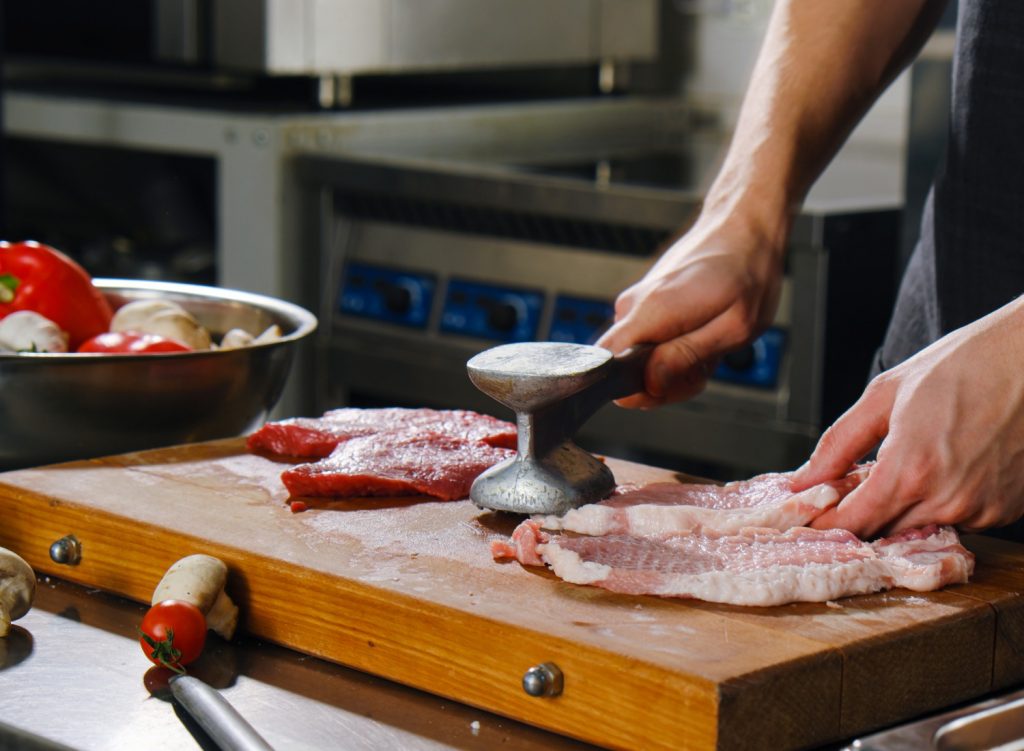How to Tenderize Steak Like a Professional Chef

Few culinary experiences can rival the satisfaction of cutting into a perfectly cooked, tender steak. The key to achieving that succulent, melt-in-your-mouth texture lies in proper tenderization. Professional chefs have mastered the art of tenderizing steak, and in this blog, we’ll unveil their secrets so you can replicate that restaurant-quality tenderness in your own kitchen.
A beautifully tenderized steak begins with your choice of steak, but it doesn’t end there. Techniques like salting, marinating, and using the right cooking temperature are all essential steps in the journey to steak nirvana. Whether you’re a seasoned home cook or a novice in the kitchen, the tips and tricks you’ll learn here will help you transform an ordinary steak into a culinary masterpiece. Get ready to elevate your steak game and impress your guests with the skills of a professional chef.
Choose the Right Cut of Steak
Tenderizing begins at the very foundation—your choice of steak. Not all cuts are created equal. Selecting a cut that naturally boasts tenderness can save you a lot of effort. Prime choices for tender steak include ribeye, filet mignon, and New York strip. These cuts have a higher fat content and marbling, making them naturally more tender and flavorful.
Salt Your Steak in Advance
One of the simplest and most effective ways to tenderize steak is by salting it in advance. This method, known as dry brining, involves sprinkling a generous amount of kosher salt on both sides of the steak and letting it sit in the refrigerator for at least one hour or even overnight. The salt draws out moisture from the steak and then reabsorbs it, breaking down the meat’s proteins and making it more tender.
Use a Meat Mallet
A meat mallet, also known as a meat tenderizer tool, is a handy tool for physically tenderizing your steak. Before cooking, place the steak between two sheets of plastic wrap to prevent it from tearing, then gently pound the meat with the mallet. Be cautious not to overdo it—you’re aiming to soften the muscle fibers, not obliterate the steak. A few light taps should suffice.
Marinate for Flavor and Tenderness
Marinating your steak not only infuses it with delicious flavors but can also help tenderize it. Acidic ingredients like vinegar, citrus juice, or yogurt in the marinade can break down the muscle fibers, making the meat more tender. Some great marinating options include garlic, herbs, soy sauce, and even pineapple juice. Allow the steak to marinate for at least 30 minutes or, ideally, a few hours in the refrigerator before grilling or cooking.
Employ Enzyme-Based Marinades
Some enzymes found in fruits like papaya and kiwi contain natural tenderizing properties. When used in marinades, these enzymes can break down tough muscle fibers, resulting in a velvety texture. Be cautious not to over-marinate, as the enzymes can eventually turn the steak mushy if left for too long. Aim for 30 minutes to an hour for the best results.
Cook to the Right Temperature
Professional chefs understand the importance of cooking steak to the correct temperature. Overcooking can turn a tender cut of meat into something resembling shoe leather. Invest in a meat thermometer to achieve precision. For medium-rare, cook to an internal temperature of 130-135°F (54-57°C) and let the steak rest for a few minutes. This resting period allows the juices to redistribute, ensuring a juicy, tender result.
Rest the Steak
Resting is a crucial step often overlooked. After cooking your steak, transfer it to a plate and tent it with aluminum foil. Let it rest for about 5-10 minutes. This resting time allows the juices to reabsorb into the meat, resulting in a steak that’s both flavorful and tender. Don’t skip this step, as it can make a significant difference in the final texture of your steak.
Slice Against the Grain
When it comes time to serve your steak, slicing it correctly can enhance its tenderness. Always slice against the grain. This means cutting perpendicular to the direction of the muscle fibers. Slicing with the grain can make even a tender steak feel chewy, whereas slicing against the grain shortens the muscle fibers, ensuring a more tender and enjoyable eating experience.
Practice, Practice, Practice
Finally, don’t be discouraged if your first attempts at tenderizing steak don’t yield perfect results. Like any culinary skill, tenderizing steak takes practice. Experiment with different cuts, marinades, and cooking techniques until you find the best method for your preferences. Over time, you’ll develop the intuition of a professional chef, consistently producing mouthwatering, tender steaks in your own kitchen.
Conclusion
Tenderizing steak like a professional chef combines selecting the right cut, using salt and marination techniques, cooking to the correct temperature, and paying attention to the finer details like resting and slicing. With a little practice and the right knowledge, you can elevate your steak-cooking skills to the level of a seasoned chef, impressing your friends and family with perfectly tender steaks every time you cook.